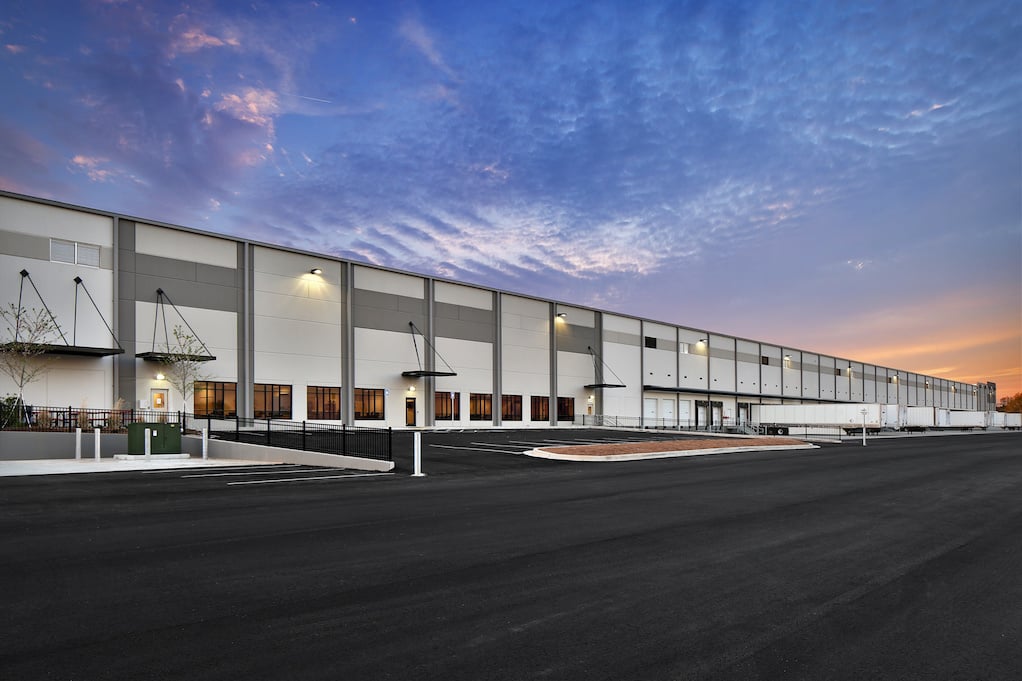Has a fully post-pandemic market finally stymied the unbeatable growth of the warehouse industry spurred by e-commerce?
In the last year or so, the industrial market has largely been tightening its supply to avoid outpacing demand. This is no secret, but below the surface, other dynamics within the warehouse market are working against it, leading to a major falloff in transaction volume.
Now, suffering from the weakest quarter-over-quarter performance in nearly a decade, let’s take a look at the headwinds slowing the sector and what the future may look like.
Industrial Activity is Dropping
Following a period of accelerated growth, a more cautious recalibration has hit the industrial market.
Consumer behavior underwent a seismic shift during the pandemic towards e-commerce, driving unprecedented demand for industrial assets. This surge in online shopping not only propelled the growth of online retailers but also placed immense pressure on their supply chains, necessitating rapid expansion in industrial development to meet the soaring demand.

However, the frenetic pace of growth has begun to stabilize as the economy adapts to post-pandemic realities.
Consumer spending, which experienced a temporary dip, has led to a natural pullback, resulting in a slowdown in industrial construction activity. This measured approach aims to prevent oversaturation of the market, particularly amidst concerns over persistently high interest rates.
|
“There was outsized demand from e-commerce, home delivery, and a need to store general inventory when it finally came out from damaged supply chains. But as things have normalized, they’ve needed less space and have been closing extra distribution centers and putting them up for sublease.” -GlobeSt |
Developers, cognizant of the need to maintain market equilibrium, have deliberately decelerated production to avoid an imbalance between supply and demand, thereby preventing rents from plummeting despite an influx of industrial inventory.
However, absorption is still lacking despite those efforts. Now, the first quarter of 2024 marks the weakest industrial performance in a decade.
But, despite this slowdown, the need for industrial space is persistent. Unless Americans suddenly stop online shopping overnight, the industrial sector is poised to weather the current challenges. So, no one is ringing any alarm bells for the industrial sector yet.
The expectation for next-day delivery persists among consumers, while the growing trend of onshoring manufacturing and a heightened interest in diversified supply chains further bolster the sector's resilience moving forward.
|
“E-commerce requires three times the amount of logistics space than bricks and mortar retail, according to Green Street. Online sales are expected to keep growing an average 6.5% annually the next five years.” -Wall Street Journal |
"Not in My Backyard" Zoning Challenges
It’s not just the fluctuating demand for e-commerce space that is slowing industrial activity and absorption. The industrial market is undergoing a massive shift coinciding with the country’s evolving economic and political dynamics.
Questions have been raised about the availability of land designated for commercial use. Developers are consistently running into “not in my backyard” resistance from local governments.
This growing community opposition has emerged as the latest obstacle, leading to prolonged delays, increased costs, and zoning blocks, particularly in regions like New Jersey and the Inland Empire in Southern California.
|
“Some governments are blocking distribution centers partly because they are running out of land for commercial purposes. They want to attract high-salaried office jobs to the sites, rather than logistics developments that pay lower wages and make smaller contributions to tax revenues.” -Wall Street Journal |
The tension that arises is then due to the fact that fast delivery necessitates strategically placing warehouses closer to consumers to shorten supply chains. This proximity facilitates quicker access to products and enables expedited shipping, enhancing customer satisfaction. Yet, achieving this closeness to consumers for efficient access to products clashes with the reluctance of communities to accept massive warehouse developments in their vicinity.

The heightened traffic congestion, elevated levels of noise pollution, and the visual degradation of the urban environment that comes with a new major warehousing facility down the block are hard to accept.
|
“It’s taking multiple years to get your project from the dirt being ready to having all the final approvals.” -Vince Tibone, managing director at analytics firm Green Street |
Closing the gap between consumer and product indeed requires a level of closeness or accessibility. But no one wants a massive warehouse looming over their city. On the other hand, everyone wants quick turnaround times between placing and receiving an online order.
This tension is a logical segue-way for the other dynamics emerging in the industrial sector: multi-story facilities and nearshoring. Limited land availability is beginning to drive the evolution of industrial space to become multi-story.
Multi-story industrial spaces offer a potential solution to this dilemma by maximizing land use efficiency in densely populated areas. By stacking warehouse facilities vertically, developers can accommodate the spatial constraints of urban environments while still meeting the demand for proximity to consumers.
|
“Multi-story warehouses are arguably the only way to increase the amount of functional space without encroaching on more valuable land for residential and other commercial development that can fetch higher rent.” -GlobeSt |
However, the widespread adoption of multi-story industrial spaces is still far off from happening. Obvious challenges innovative design, advanced logistics systems, and significant investment to optimize operations within vertical structures.
Additionally, the "not in my backyard," attitude has proven to be even more intense for multi-story warehouses, leading to major doubt of their widespread acceptance.
Because of the massive costs and challenges, land scarcity will likely need to become a far-more pronounced issue before, multilevel warehouses become worth it for most companies.

Rise of Nearshoring
So, in the meantime, the process of nearshoring has become far more commonplace. Working around U.S. land issues, many distributors and businesses are building warehousing facilities in nearby countries. This does shorten supply chains, easing the pressure to maintain short delivery cycles for consumers.
The goal to reduce supply chains is compounded by the U.S. government’s new push towards self-reliance in manufacturing with legislature like the CHIPS act. These drivers are predicted to affect demand in regions throughout the country, particularly those close to Canada and Mexico. Read more about it in Advanced Manufacturing is the Future of the Industrial Sector.
So, the demand for national prowess in manufacturing coupled with persistent demand for shorter turnaround times will likely ensure that the industrial sector is robust for years to come– even if it is in a bit of a slump now.
Takeaways for Tenants
Despite the current challenges and uncertainties, the industrial sector remains resilient. The convergence of factors driving its evolution suggests that it will continue to play a vital role in the global economy.
As warehouse tenants navigate these changes, embracing innovation and flexibility will be paramount in adapting to the evolving landscape of industrial real estate.
While the unprecedented growth spurred by e-commerce has slowed, the need for industrial space remains resilient, driven by consumer expectations for fast delivery and the increasing focus on onshoring manufacturing and diversified supply chains. However, the sector faces challenges beyond fluctuating demand, including community opposition to warehouse developments and land scarcity.
As warehouse tenants, adapting to these changes and embracing innovative solutions will be crucial to navigating the evolving landscape of the industrial market. Onshoring, nearshoring, and multi-story warehouses are growing in popularity and will become bigger players through the next few years. It is on tenants to stay aware of these evolving dynamics to secure their optimal commercial real estate performance.
Staying on top of trends gives tenants an edge. Don’t get left behind. Get on the front line of real estate evolution by subscribing to our blog.








